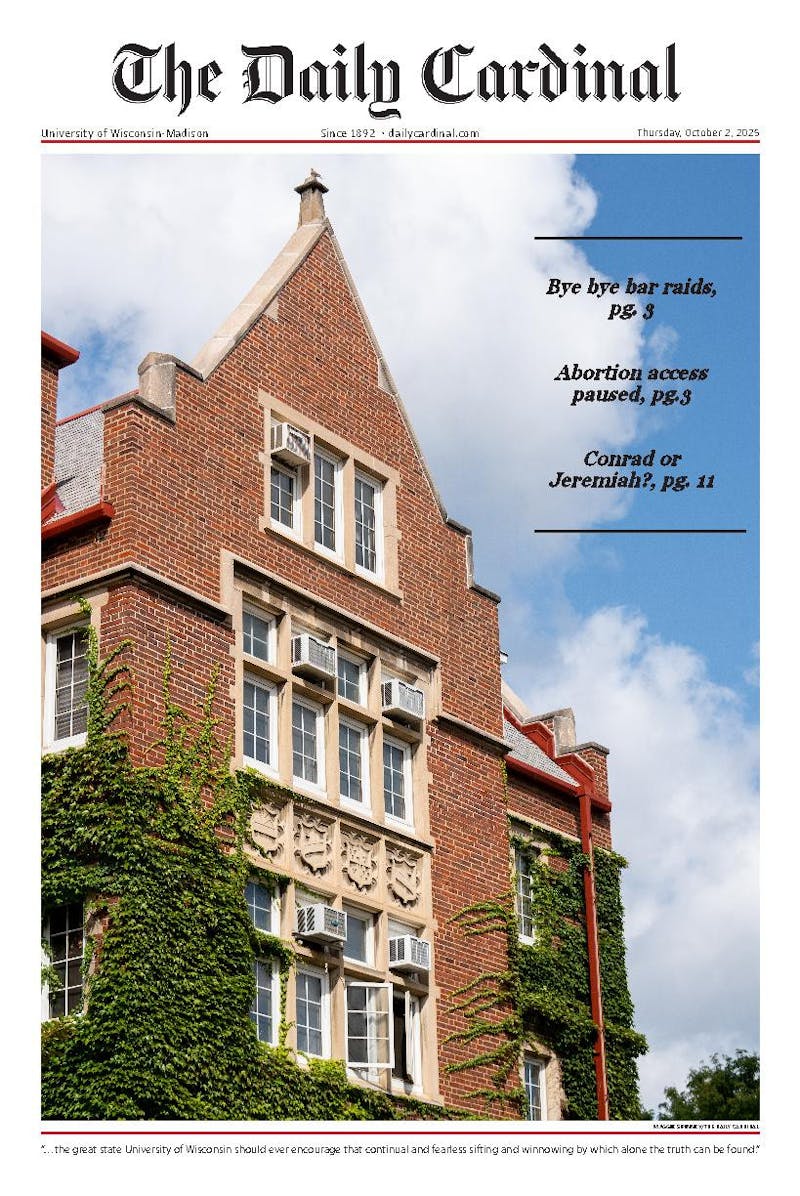Anyone familiar with Haruki Murakami’s work knows his fiction does not operate by the world’s logic, least ways not the world we live in. In Murakami’s world, mystic sheep inhabit human beings and bestow preternatural powers; voices speak from beyond death and dreams; six-foot-tall frogs fight giant worms under Tokyo and the line between realities is blurred. Characters are thrown into this world befuddled, often just trying to live their own humdrum lives while abnormal and sometimes horrifying forces play with and implicate these characters in their own affairs against the cultural backdrop of 20th-Century Japan. And his latest novel, “1Q84,” has been hailed as his magnum opus.
Without mincing words, “1Q84” is a heady read. To begin with, the English translation is over 900 pages long. Murakami has never shied away from long novels (his 1997 novel “The Wind-Up Bird Chronicle” was 607 pages), but this is his longest undertaking to date. Besides the length, “1Q84” is distinguished by third-person narration. Since 1979, Murakami has written consistently in the first person, his narrators all cast from the same mold: They were young men in their 20s or 30s with an affinity for cooking, jazz, and Western literature, who were thrown into abnormal situations. But here, he employs the third person, in two alternating but intertwined stories. (He used a similar technique in 1991’s “Hard Boiled Wonderland and The End of the World.”)
There is a typical Murakamian protagonist named Tengo in this story, but the principal character is a woman named Aomame, a fitness trainer with an unusual side job. She sets off the events of the novel in a deceptively simple manner. In the year 1984, while stuck in traffic, she exits her taxi and takes an emergency stairwell to reach an important business meeting.
She emerges to find herself in what she dubs “1Q84,” a world with two moons where subtle details have been changed. She is, to paraphrase one of the characters in the novel, in the same world but running on a different track.
Disconcerting? Absolutely. But it’s a familiar trope of Murakami’s; and “1Q84” is full of familiar tropes. The book includes an affable male protagonist, a psychic-like young female, sinister male duos, dangerous cults, cats, jazz musicians, casual sex descriptions, murky machinations. Murakami fans will recognize these personalities immediately.
In many respects, “1Q84” is nothing new for Murakami. The story unfolds slowly, and sometimes you wonder if anything is really happening at all. Events transpire, but they do so at random with no apparent connection. Even the reference to George Orwell’s “1984” is nothing new: It’s a cultural reference in this immense book, a remarked upon but almost negligible touchstone. There are parallels between Aomame and Tengo and between Julia and Winston Smith, but there is not much comparative substance, and the books are very, very different.
Anyone looking for “1Q84” to be Murakami’s magnum opus will be disappointed. It isn’t. But is it worthless? Of course not. It is a summation, almost a self-commentary, of his 30-plus-year career—everything weird and wonderful about Murakami’s fiction is packed into this book. And really, Murakami’s oeuvre defies something as simple as ranking. His fiction is like being caught in a cloud of fog: It envelops you, distorts the light and throws everything askew; eventually you leave the fog, but inside the cloud you are wholly immersed in a misty, fleeting world. Maybe you hate it, maybe you want to stay in the cloud forever, but for a time it is like you are somewhere else.
For anyone who doesn’t like Murakami, this book will not change your mind about him. In fact, you may hate him more for it. If you’ve never read Murakami, this is not the book to start with—it’s the one you work toward. But for Murakami fans, “1Q84” will bring all the familiar sighs, smiles and shudders.





